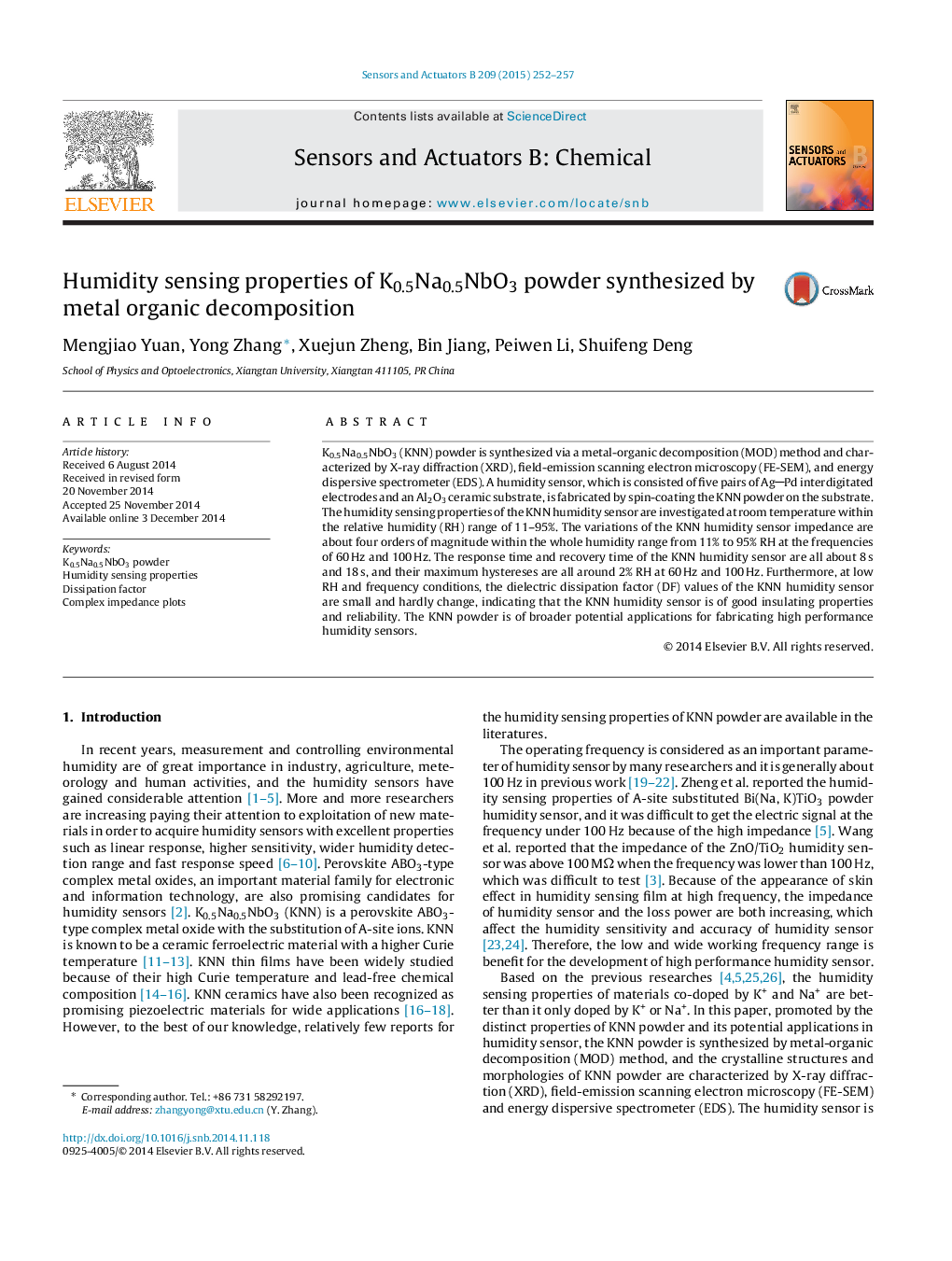| Article ID | Journal | Published Year | Pages | File Type |
|---|---|---|---|---|
| 7146068 | Sensors and Actuators B: Chemical | 2015 | 6 Pages |
Abstract
K0.5Na0.5NbO3 (KNN) powder is synthesized via a metal-organic decomposition (MOD) method and characterized by X-ray diffraction (XRD), field-emission scanning electron microscopy (FE-SEM), and energy dispersive spectrometer (EDS). A humidity sensor, which is consisted of five pairs of AgPd interdigitated electrodes and an Al2O3 ceramic substrate, is fabricated by spin-coating the KNN powder on the substrate. The humidity sensing properties of the KNN humidity sensor are investigated at room temperature within the relative humidity (RH) range of 11-95%. The variations of the KNN humidity sensor impedance are about four orders of magnitude within the whole humidity range from 11% to 95% RH at the frequencies of 60Â Hz and 100Â Hz. The response time and recovery time of the KNN humidity sensor are all about 8Â s and 18Â s, and their maximum hystereses are all around 2% RH at 60Â Hz and 100Â Hz. Furthermore, at low RH and frequency conditions, the dielectric dissipation factor (DF) values of the KNN humidity sensor are small and hardly change, indicating that the KNN humidity sensor is of good insulating properties and reliability. The KNN powder is of broader potential applications for fabricating high performance humidity sensors.
Related Topics
Physical Sciences and Engineering
Chemistry
Analytical Chemistry
Authors
Mengjiao Yuan, Yong Zhang, Xuejun Zheng, Bin Jiang, Peiwen Li, Shuifeng Deng,
